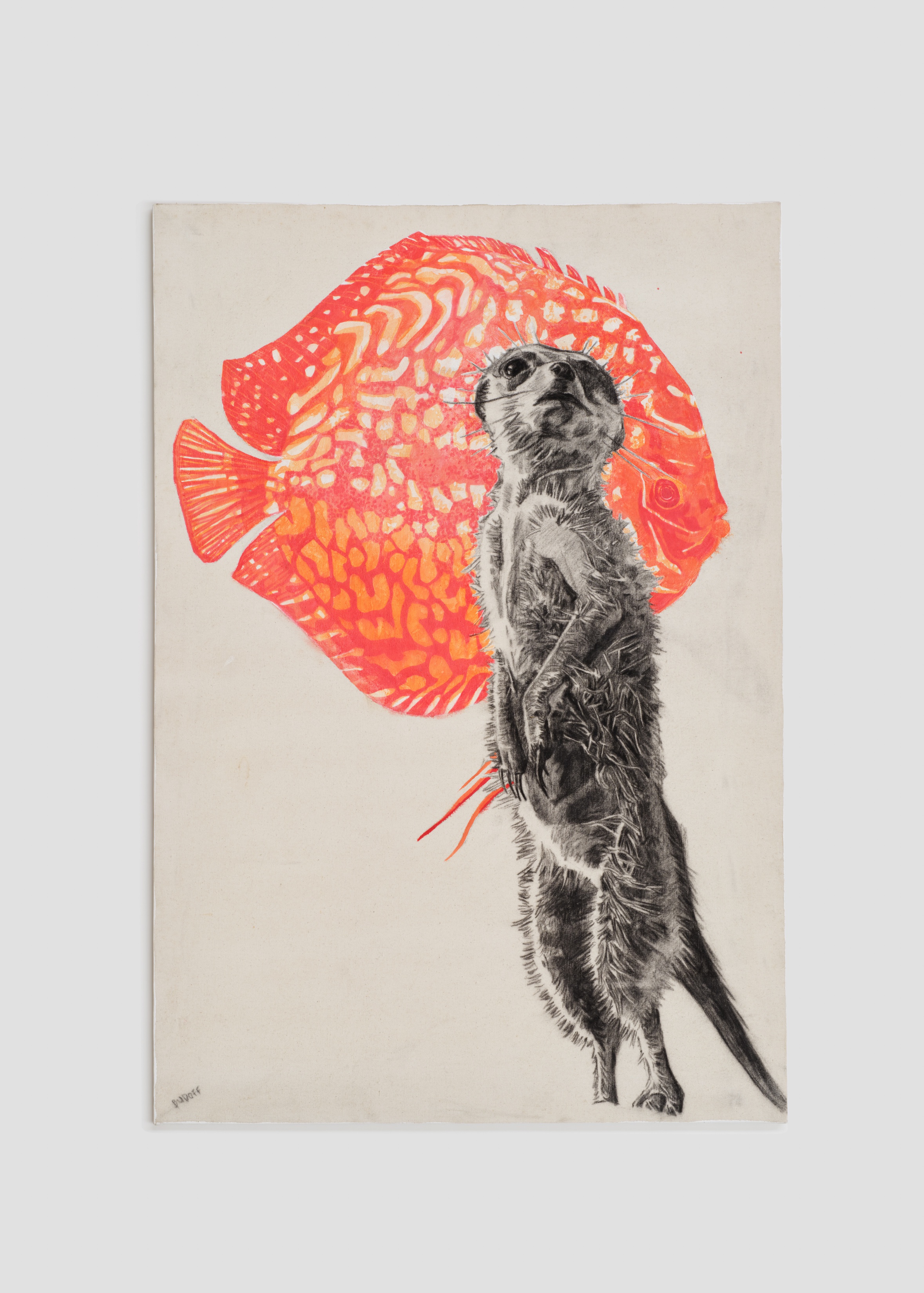
Foreword to the Show
In the 1960s, ecologist Robert Paine hypothesized that top-level predators ensure long-term ecosystem stability by maintaining biodiversity. Paine tested his hypothesis by removing apex predators from intertidal pools; Ecological collapse ensued.
By removing apex predators from their ecosystems, Paine discovered that predators exert top-down population controls that keep lower-order food chain organisms from overexploiting resources, thereby maintaining ecological homeostasis. Today, Paine’s discovery is known as the keystone species theory.
Paine’s discovery created a paradigm shift in our fundamental understanding of how ecosystems function. Instead of being organized like a pyramid, many ecosystems function as inverted pyramids, where the predator’s behavior, presence, and absence play a weighty role in determining long-term ecosystem stability.
In our anthropocentric world, we often overlook the extreme top-down pressures humans exert on the planet. Nathan Budoff and Wookjae Maeng’s work reminds us that “even when we are hardly aware of one another, we really are all living together,” Nathan Budoff. This sentiment lies at the heart of this showcase, which highlights our moral responsibility to understand the interconnected nature of flora, fauna, and space and uses Paine’s seminal discovery as a metaphor that illustrates how artists are—in effect—the keystone species of the art market.
–Spencer Linford, communications

Water Watcher, Nathan Budoff
Artist Statement
At the heart of my work lies the tension between the possibility of encounter and the threat of disappearance. Even when we are hardly aware of one another, we really are all living together. By bringing together creatures normally threatening or simply without a relationship to one another, my works capture an urge to unify. Birds, bears, trees, and fish mingle in spaces and groupings as if conversing or passing in futility.
Like much of our society, I find it natural to dwell in cynicism and critique, but I believe striving for possibility is important; it is essential for us to create. My newest works feature fauna interacting in closer encounters, such as dancing. They cross from one medium to another, all on one piece of cloth or paper, to capture the interconnected nature of flora, fauna, and space—that unifying urge. At the same time, there is an ominous quality to some of these encounters. On this small planet, we are all unified. And I try to communicate that in my works through careful historical and ecological research. For my large-scale public works, I often incorporate local landmarks and native species into the design.
“Each and every identity is extended through a relationship with the Other,” said Martiniquan writer and theorist Édouard Glissant. This alterity, often only feet away from us, is not limited to anthropological categories of difference, but extends to beings of different species, such as bees, prairie dogs, and elephants, among others. Created on raw or primed canvas or paper using a combination of oil paint, acrylic paint, shellac-based ink, charcoal, and other media, this playful work focuses on hope for a more holistic future. There may be real boundaries to this hope, but my work increasingly focuses on our yearning for communication and collaborative vitality.
–Nathan Budoff
